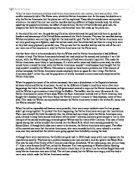On February 22, 1860 Browne declared martial law in Taranaki and days later completed the dead for the disputed land the PekaPeka block. On the 4th of Browne ordered Colonel Charles Emilius Gold, the commander of 65th Regiment, the Taranaki Milita and the Taranaki Riffle company to occupy the disputed land so surveying could be done.
At Night Kingi and about 80 men bulit a fortified Pā in a shape of an L called Te Kohia to the Maori and L Pā to the Pakeha. It was at a strategic position because it was by the road leading into the block. When Kingi refused to surrender Gold and his troops open fire on the Pā. the Pakeha fired all day including 200 round from two 24-pound Howitzers. The Pā was small but was heavily fortified and was place strategically so that the Pā was hard to completely surround. That night the Maori abandoned the Pā with no casualties lost which angered the Pakeha because firstly the British wanted a swift victory that would crush the Maori and assert british sovereignty. Te Kohia clash was a minor fight with a result that dissapointed the settlers of New Plymouth. Secondly for hundred of years the British Army fight with an enemy and then claim victory. What the Maori was abandon the Pā. This was seen as an insult to British.
Ten days after the battle of Te Kohia about 500 Maori warriors from Taranaki, Ngati Ruanui and Nga Rauru joined together in the New Plymouth area to provide support. The built a stockaded Pā called Kaipopo on one of the hills at Waireka, about 5 miles southwest form New Plymouth. Tensions in Taranaki increased when many settlers abandoned their homes to flee for safety in New Plymouth. About 1pm on March 28th, a British force of about 335 men and 56 local militia set off to rescue those that have been left behind. Captain Charles Brown, in command of the settler army, was ordered to march along the coast to rear of the Maori positions at Waireka. The British army was ordered down the main to Omata. It was intended that two groups would meet up before marching back to New Plymouth with the rescued settlers and return before nightfall. All was going to plan but as the British Army neared Waireka they heard the sound of rapid fire. They were ordered to entrench and ordered to open fire on Kaipopo Pā. The fire that was heard was the sound of a fight between 200 Maori and Brown’s men who had retreated to the safety of the farmhouse of settler John Jury. About 5:30pm, the British Army sounded the bugle retreat leaving Brown’s settler force which had already suffered two casualties and eight wounded, isolated at the farm house with little ammunition and late in the night they left the farmhouse and scrambled for the Omata stockade, arriving about 12.30 am before returning to New Plymouth late in the afternoon. Meanwhile Captain Peter Cracroft comander of the HMS Niger, had landed 60 men and marched to Waireka. Cracroft troops fired 24 pound rockets at rockets at the Pā. At dusk they stormed the Pā. The first man to enter the Pā, William Odgers was awarded the Victoria Cross for bravery. His award was the first to be awarded for the New Zealand Land Wars. The British claimed victory at Waireka claiming to kill 70-150 Maori and only losing 14 men. This is disputed by James Belich say that this was the classic British of paper victory, with claims of “enormous” losses and a Great British victory.
Early in June Te Atiawa chief Hapurona began building a stockaded Pā, Onkukaitara, adjacent to an old unfortified, Pā know as Puketakauere. Two Pā were situated on a pair of low hills 800 meters southeast of Te Kohia and 1 mile from Camp Waitara(site of modern Waitara town) which had been establish to stop the surveying of Waitara. The Pā was also in direct view of Waitara garrison which only angered the local military.







